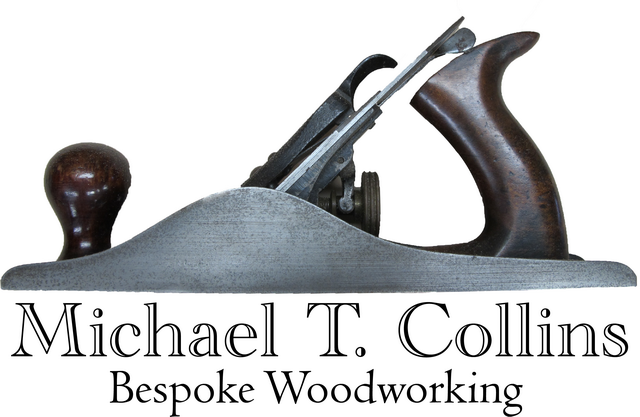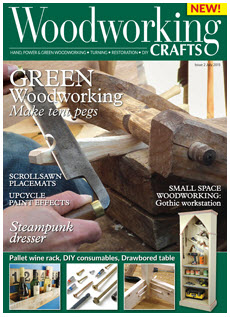Make a tabletop
The second of several articles on using hand tools.
This article first appeared in The GMC Group’s Publication Woodwork Craft Issue 2 July 2015
In last month’s article, we looked at making the base of a small table, attaching the legs to the skirt using mortise and tenon joints – one of the basic joints of a joiner – and securing the joint with the ancient technique of drawboring. In this article, we will finish the table by adding a handfinished top.
As I mentioned last time, your tool collection will grow as your experience and needs increase. Well, we have already reached the point where to continue with this project, we need to add a few more ‘necessary tools’, namely a ripsaw, a couple of 610mm bar clamps, a hand drill, a set of brad point bits, a countersink, a flat head screwdriver and a marking gauge.
Wood selection
To make a tabletop, we need the widest and most stable boards we can find. The most stable wood is quartersawn, where the wood is sawn radially out from the centre of the log, with annular rings running perpendicular to the board’s face.
It’s hard to find reasonably priced quartersawn boards, but for this table a good source is straight-grained construction timber, especially flat sawn 2 × 12in. When picking wood look for boards that are cut close to the centre of the log. The table is going to have a 20mm top and is approximately 380 × 510mm so cut off a length 50mm longer than you
need; this will leave a few centimetres for grain matching. Rip out the centre section of the wood; this can be set
aside for other projects.
Designate a face side and mark 20mm with the marking gauge. To aid visibility, run a pencil down this line. Now rip these two pieces using the same technique we used to saw tenons: placing the board in the vice at 45°, saw the two lines you can see, turn the wood over and again saw at 45°. Now saw away the triangle of wood at the bottom of the kerf. If you find that the saw binds in the kerf, rub the side of the saw with beeswax.. Read the full article here…
This article first appeared in The GMC Group publication Woodwork Craft Issue 2 2015


